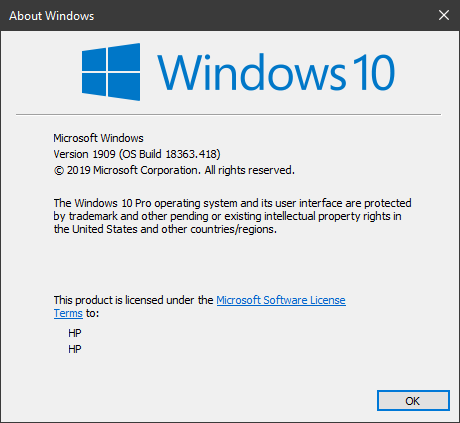Microsoft has released a list of features and functionalities removed from Windows 10 v1909. If you want to find out what’s going away or features or functionalities removed in Windows 10 v1909, check out the list below.

List of features removed in Windows 10 1909
With every new OS update, some existing features get dropped or are stopped from being actively developed – while some new features are added. So, in its latest attempt to clean up Windows and remove features that may have turned obsolete or no longer useful, Microsoft has removed the following:
- PNRP APIs
- Taskbar settings roaming
Although no longer to be seen, it is possible that these features could be replaced by some third-party apps soon.
1] Peer Name Resolution Protocol (PNRP) APIs
The Peer Name Resolution Protocol (PNRP) cloud service was removed in Windows 10, version 1809. We are planning to complete the removal process by removing the corresponding APIs.
The Peer Name Resolution Protocol (PNRP) was a serverless name resolution technology that allowed nodes to discover each other. The cloud service was earlier removed in Windows 10, version 1809. Now, Microsoft has decided to remove the process completely by killing the support for its corresponding APIs.
When present in peer-to-peer environments, peers use specific name resolution systems to resolve each other’s network locations from names or other types of identifiers.
2] Taskbar settings roaming
Roaming of taskbar settings is removed in this release. This feature was announced as no longer being developed in Windows 10, version 1903.
The taskbar is a small strip located along one edge of the screen. It typically shows which programs are currently running. Until now, roaming was a big part of it but Microsoft decided to disable this capability completely for Taskbar Settings. In a document released, Microsoft informed users that the roaming of taskbar settings will be removed from Windows v1909 release.
Applications or codes that depend on these features too, won’t function with the new release installed. It is possible that the development of some third-party apps may enable users to replicate the same experience, as earlier.
Feature deprecated in Windows 10 v1909
Microsoft will no longer be developing the following features:
| Feature | Details and mitigation | Announced in version |
|---|---|---|
| Hyper-V vSwitch on LBFO | In a future release, the Hyper-V vSwitch will no longer have the capability to be bound to an LBFO team. Instead, it can be bound via Switch Embedded Teaming (SET). | 1909 |
| Language Community tab in Feedback Hub | The Language Community tab will be removed from the Feedback Hub. The standard feedback process: Feedback Hub – Feedback is the recommended way to provide translation feedback. | 1909 |
| My People / People in the Shell | My People is no longer being developed. It may be removed in a future update. | 1909 |
| TFS1/TFS2 IME | TSF1 and TSF2 IME will be replaced by TSF3 IME in a future release. Text Services Framework (TFS) enables language technologies. TSF IME are Windows components that you can add to enable typing text for Japanese, Simplified Chinese, Traditional Chinese, and Korean languages. ? | 1909 |
| Package State Roaming (PSR) | PSR will be removed in a future update. PSR allows non-Microsoft developers to access roaming data on devices, enabling developers of UWP applications to write data to Windows and synchronize it to other instantiations of Windows for that user. The recommended replacement for PSR is Azure App Service. Azure App Service is widely supported, well documented, reliable, and supports cross-platform/cross-ecosystem scenarios such as iOS, Android and web. |
The features described below are no longer being actively developed and may be removed in a future update.
Leave a Reply